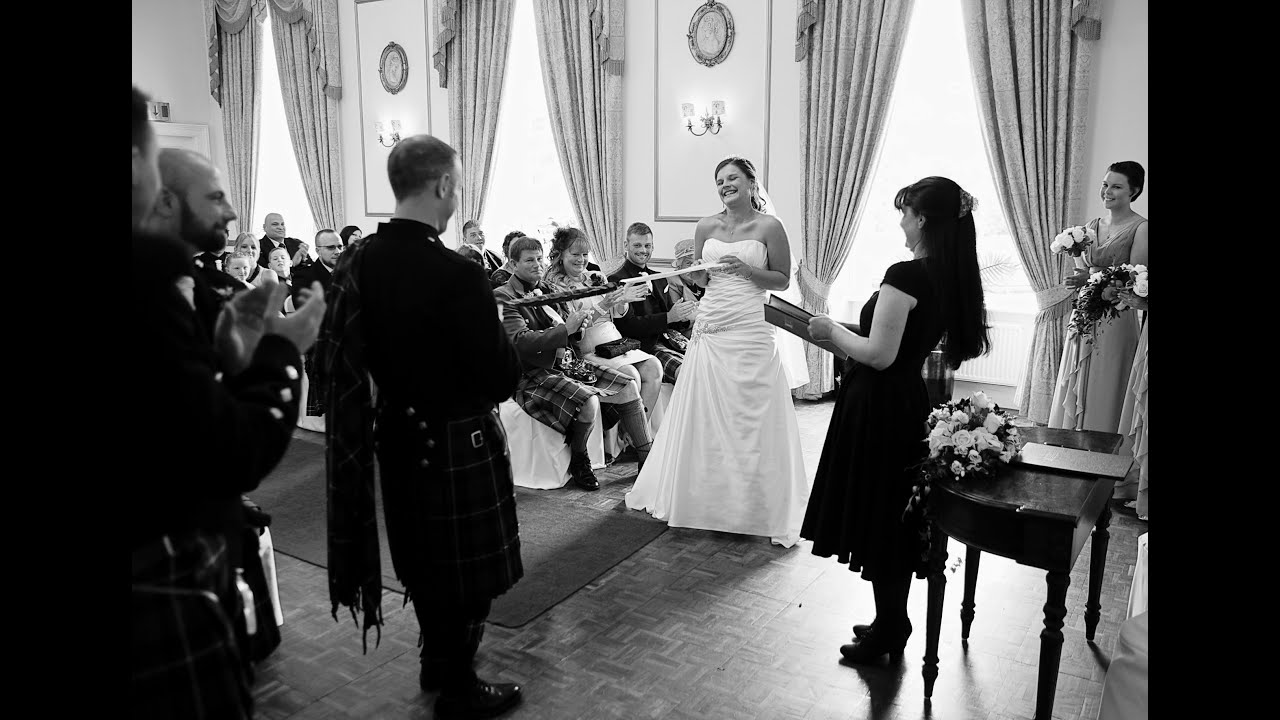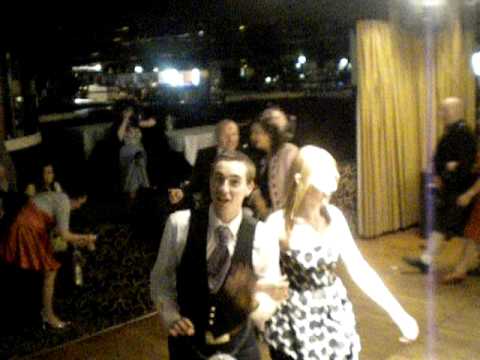Scotland, a prominent constituent of the United Kingdom, is celebrated for its breathtaking landscapes, which encompass wild beaches, majestic mountains, and serene lochs.
The Scottish people are equally renowned for their distinct accents and sharp wits. This unique blend of nature and culture becomes especially evident in their wedding blessings and Champagne toasts.
Drawing inspiration from literature, nature, and even humor, Scottish wedding blessings and toasts have a charm all their own. In this article, you’ll uncover 14 classic examples that can be the perfect touch for your special occasions or inspire your own unique creations.
Moreover, we’ll share essential pointers for crafting an unforgettable toast and also shed light on other cherished Scottish wedding traditions.
Blessings and Toasts for Your Scottish Wedding
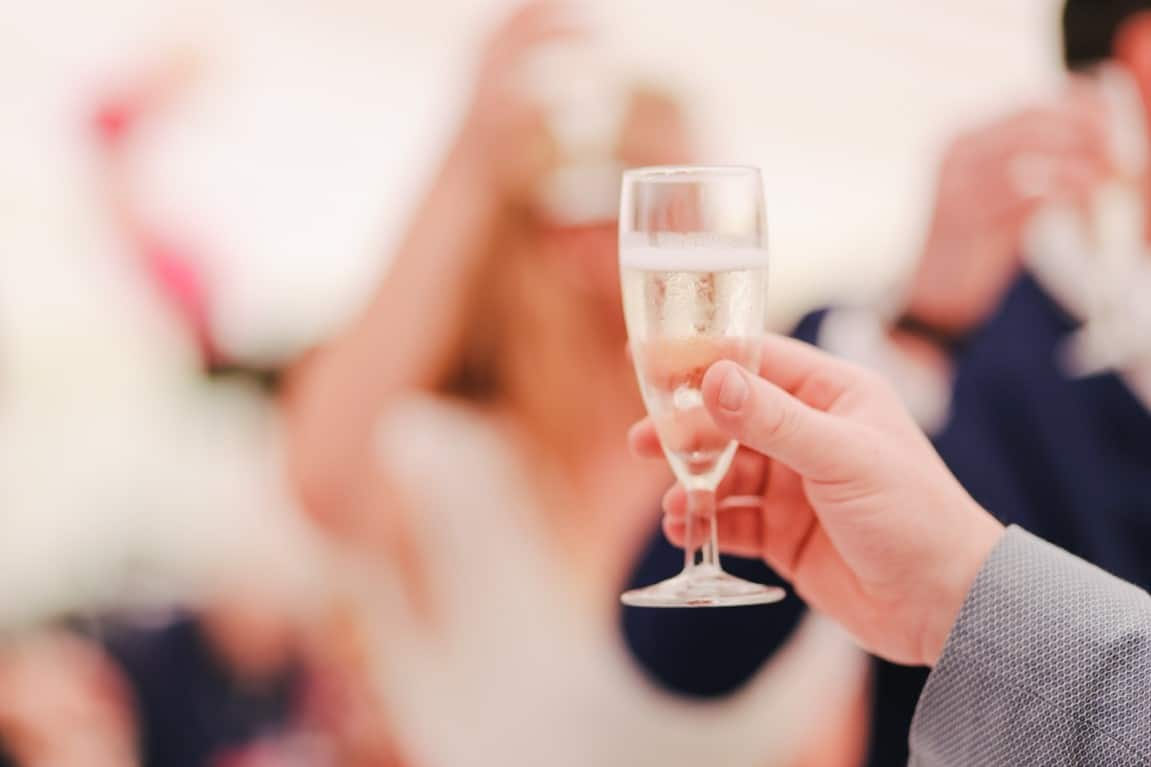
1. “Dear God,
Help us remember when we first met and the secure love that grew between us; to channel that love into practical things so that it can only grow stronger.
We ask for kind and loving words, and we ask for hearts with a never-ending capacity to forgive and ask forgiveness.
Lord, we put our marriage in Your ever-loving hands.”
2. “A thousand welcomes to you with your marriage kerchief,
May you be healthy all your days.
May you be blessed with long life and peace.
May you grow old with goodness and with riches.”
(by Rev. Donald Macleod, minister of Duirinish, Skye, Scotland, circa 1760)
3. “May the blessing of light be on you, light outside and light within. May the blessed sunlight shine down on you like a great fire, so that strangers and friends alike may come and warm themselves with it. And may you two be a beacon of light for everyone around you, like a candle set by the window of a house, bidding the wanderer take shelter from the storm.
And may the blessing of the rain be on you; may it wash your Spirit fair and clean, leaving a shining pool where the blue of Heaven shines. May the blessing of the earth be on you, soft under your feet as you walk along the roads, soft under you as you lie on it when you are tired at the end of the day.
May the Lord bless you and bless you kindly.”
4. “May the hills lie low,
May the hills lie low,
May the sloughs fill up
In thy way.
May all evil sleep,
May all good awake
In thy way.”
(from “Mystery on the Isle of Skye”)
5. “If there is righteousness in the heart,
There will be beauty in the character.
If there is beauty in the character,
There will be harmony in the home.
If there is harmony in the home,
There will be order in the nation.
If there is order in the nation,
There will be peace in the world.
So let it be, Lord.
Amen.”
6. “May you both be blessed with the fortitude of heaven, the brightness of the Sun, and the brilliance of the moon. May you have the magnificence of fire, speed of lightning, quickness of wind, depth of the sea, stability of Earth, and the sturdiness of rock.
May your joys be as sweet as the flowers that blossom in spring and as radiant as the summer Sun. May the shower of autumn leaves bring to you faith and fortune, and may your love be resilient amidst the long winter nights.”
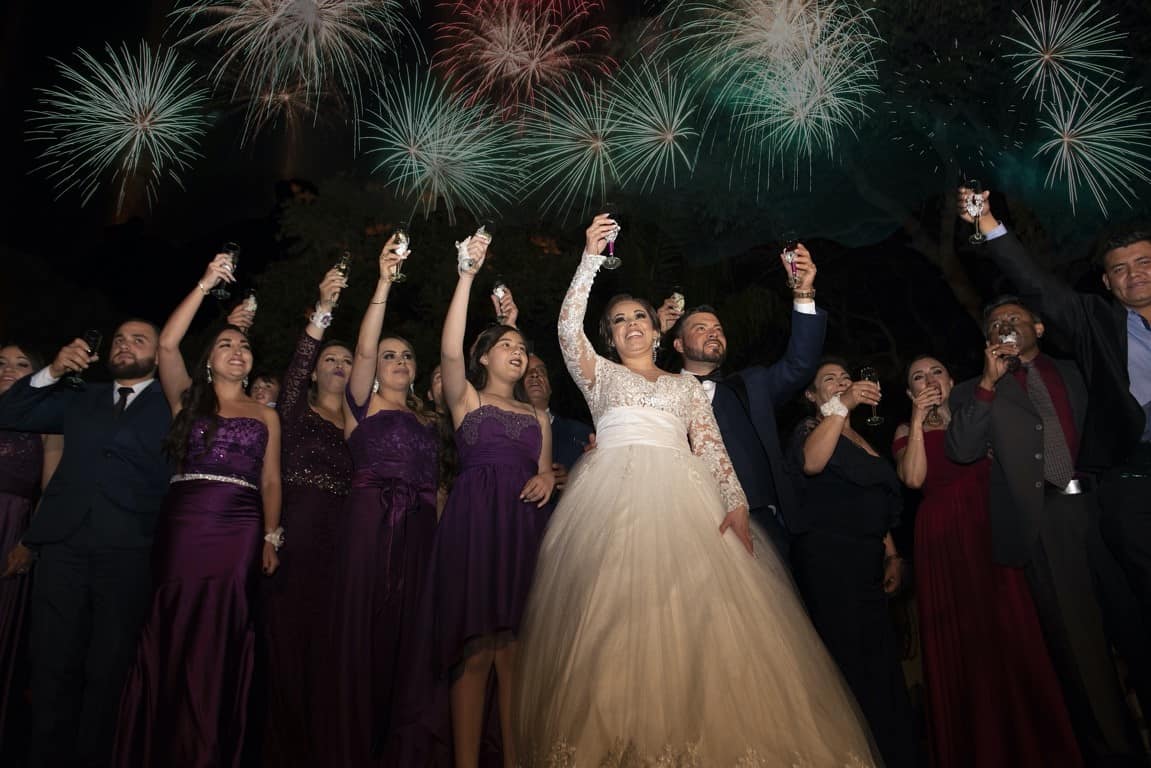
7. “A toast to the bride and the groom! Firstly, may you two have a happy and fruitful honeymoon. May your life be happy and full of good fortune, and may you remain lovers for life.
May the bride and groom always have good health, as well as all of the guests here with us today. May you be surrounded by peace, joy, and patience. May you find contentment individually and as a couple, and may you be blessed by the Lord forevermore.“
8. “May the best you have ever seen
Be the worst you will ever see.
May a mouse never leave your girnal
With a teardrop in its eye.
May you always keep hale and hearty
Till you are old enough to die.
May you always be just as happy
As we wish you always to be.“
(girnal means “storage chest for meal and oats”)
9. “Here’s tae us,
Who’s like us?
Damn few,
And they’re a’ deid!”
(This is often referred to as a theatrical Scottish toast. Whoever delivers this toast typically stands on a chair with one foot on the table. Once they finish, they chug their drink then smash the glass from which they drank.)
10. “Wishing you always walls for the wind,
A roof over your head for the rain,
Tea to sip beside the fire,
And the love and laughter of those you hold dear.“
11. “Wherever you live in the world so wide,
We wish you a nook on the sunny side.
With much love and care,
A little purse with money to spare,
Your own cozy hearth where your day is spent,
In a little house where your hearts are content.”
12. “With a tie not easy to break
Take the time of bindin
Before the final vows are made
To learn what you need to know,
To grow in wisdom and love.
That your marriage will be strong,
That your love will last
In this life and beyond.”
(This blessing is typically said during a Scottish wedding tradition called “handfasting,” wherein the couple’s hands are tied together using a ribbon or a cord. This knot symbolizes their lifelong union and commitment to each other.)
13. “May God be with you and bless you,
May you see your children’s children.
May you be poor in misfortunes and rich in blessings,
May you know nothing but happiness
From this day forward.”
14. “You are the star of every night
And the bright sun every morning.
You are the story of every guest,
And the report of every land.
No evil shall befall you, on a hill nor bank,
In a field or valley, on a mountain or in glen.
Neither above nor below, neither in the sea nor onshore
Neither in the skies above nor in the depths.
You are the kernel of my heart,
The face of my sun,
The harp of my music,
The crown of my company.”
Things to Remember for Scottish Wedding Blessings and Toasts
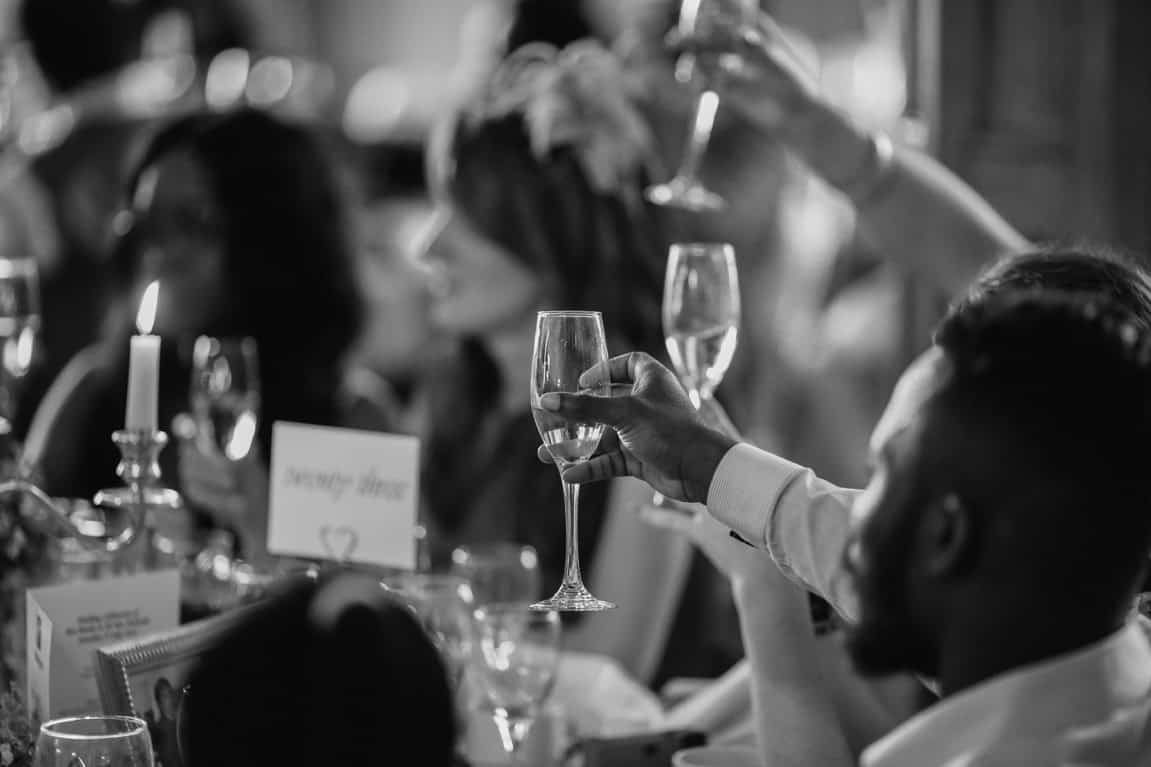
What to Include When Writing Your Own Toast?
Firstly, it is important to keep in mind that there is no right or wrong way of writing a toast. Every person will come up with a different toast because no two persons are the same. However, based on the examples given, you may want to consider the following points for your wedding blessing or toast:
- Well-wishes for the newlyweds, especially long-term well-wishes and blessings.
- Compliment the newlyweds.
- Talk about what the newlyweds mean to you; what is your relationship with them? How have they helped you become a better person?
- Share a memory or an anecdote you have that involves the newlyweds.
- Congratulate the newlyweds for their union.
In the examples above, it can be determined that Scottish wedding blessings and toasts use figures of speech and flowery language. Furthermore, seasons, landscapes, and other natural phenomena are also frequently mentioned. You can emulate this feature when writing your own toast, though you are not required to do so.
It may also be a good idea to introduce yourself to the guests before proceeding with your speech. Depending on how large your guest list is, there is a chance that not everyone in attendance will know you and your relationship with the couple.
Lastly, you may end your toast with a simple “Cheers,” its Gaelic equivalent “Slainte!” (pronounced slawn-cha), or “A toast to the newlyweds!”
Who Gives the Toast?
Traditionally, Scottish wedding blessings and toasts are given by the bride’s father. The speech may contain words of wisdom regarding marriage, compliments for the newlyweds, and humorous anecdotes. The clergyman may also give a toast, followed by a close friend of the couple. Once everyone has given a speech, the groom will express gratitude on behalf of him and his wife.
Nowadays, anyone can give a speech at a Scottish wedding if they want to. This includes the maid of honor, the sister of the bride, the rest of the couple’s parents, and other relatives. However, they must be informed ahead of time so they can make the necessary preparations for the toast.
When Are Toasts Given?
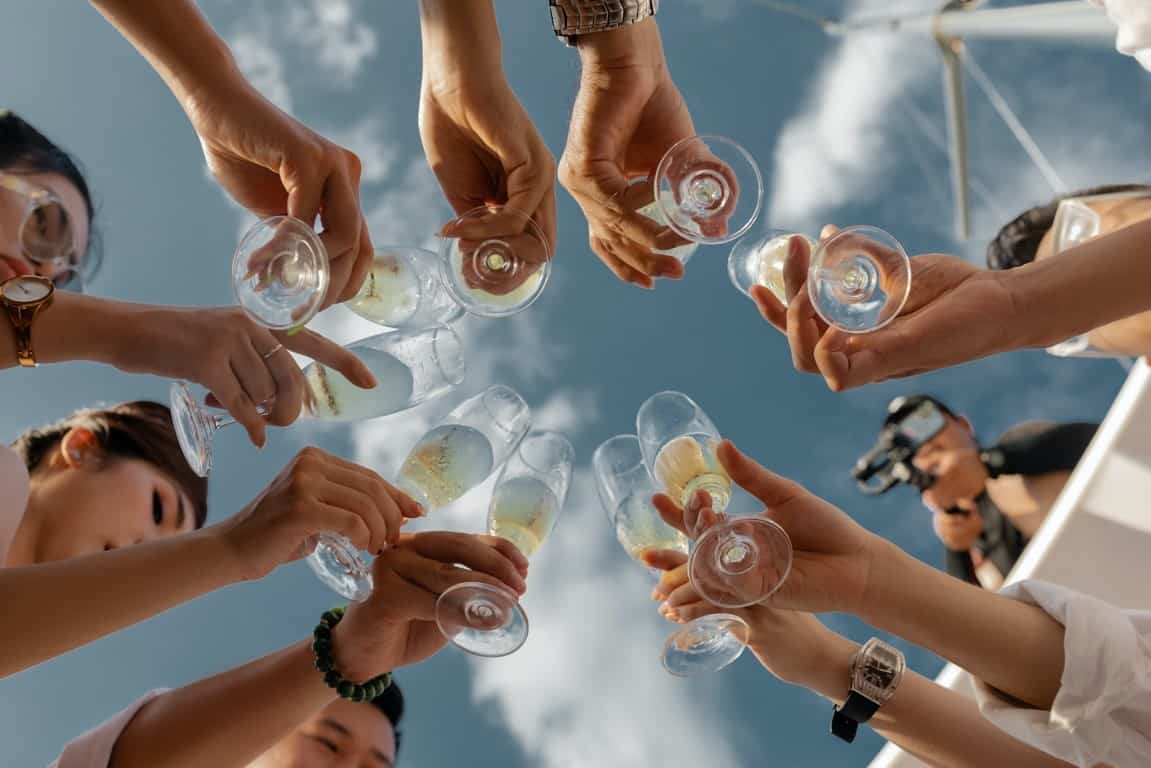
In a formal wedding ceremony, toasts would typically be given immediately after the meal. The toasts may also be given before or after the reception prayers for grace and blessings. Furthermore, couples can opt to have the speeches be given before or after the cake-cutting ceremony. However, speeches must be given before the newlyweds’ first dance.
If the ceremony is informal or not as structured as formal weddings, toasts can be given at any point in the itinerary; guests can speak as the first course is being served, after the first dance, or just before the event ends. Coordinate with guests and vendors to come up with a schedule that makes sense.
Scottish Wedding Traditions
Scotland has a plethora of wedding traditions that are rooted in the country’s history, mythology, and culture. Couples are free to choose which ones they want to incorporate into their wedding; knowing what these wedding traditions are, along with their significance and symbolisms, will help you decide which ones you can integrate into your itinerary.
The Luckenbooth
Before the wedding, the groom-to-be gives this accessory as a gift to the bride-to-be, acting as a token of his love and devotion. She safeguards the brooch as a keepsake from the wedding, and when the couple’s first child is born, the brooch is pinned onto the infant’s blanket as a symbol of good luck.
Creeling the Bridegroom
A creel refers to a large wicker basket used to carry freshly caught fish. In this historical Scottish wedding tradition, however, the creel is full of stones. On the day before their wedding, the groom would carry the creel across the village. He will only stop “creeling” once the bride leaves her house, finds her groom, and gives him a kiss.
Feet-Washing Ritual
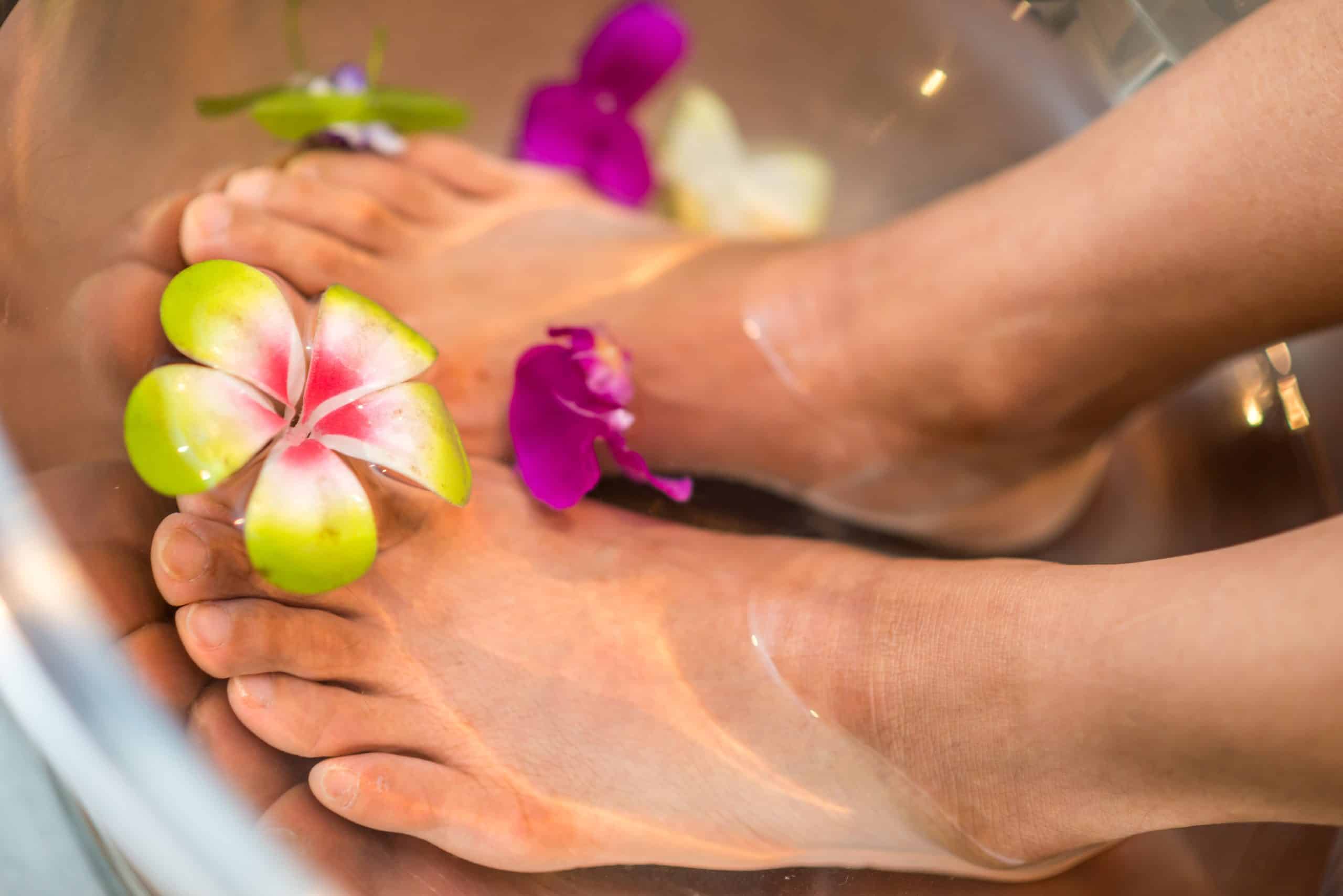
Typically found in the regions of Fife, Dundee, and Angus, the feet-washing ritual is performed on the bride by a woman who is happily married herself. On her wedding day, the bride will sit on a stool and let the married, usually older, woman wash and then dry her feet. In doing so, the older woman hopes to attract luck and fortune into the bride’s marriage.
In some cases, the married woman would submerge a ring in the water used to wash the feet of the bride. It is said that the first woman to find this ring first would be the next person to get married.
Blackening
A rare extension of the bride’s feet-washing ritual involves the groom’s legs being rubbed with soot, ash, and grease. This addition is practiced mostly in Fife. Once the rubbing is done, the groom will then sit in a bathtub filled with water.
Bridal Stones
While the couple exchanges their vows, it is Scottish wedding tradition for them to put their hands together on a stone. In some regions, the couple’s names would be engraved onto a stone or a tree. However, it is more common now for small stones to be used, with the couple’s names and their wedding date etched onto the surface.
Caim
The Scottish wedding tradition of the caim involves the bride and groom drawing a circle surrounding themselves. This act is a physical representation of their commitment and unity not only with each other but also with God. A prayer, also called the caim, is uttered during the performance of this wedding tradition:
Silver Coins
Reminiscent of the las arras tradition present in Latin and Hispanic cultures like Puerto Rican and Mexican, Scottish grooms give 13 “arrhae” or silver coins to the priest. The priest blesses the coins and then drops them onto the groom’s hands, the sound of which is symbolic of the groom’s promise to protect and provide for his bride.
Once the bride receives the coins, she pours them back onto the groom’s hands. This exchange signifies a vow of financial literacy; it is their promise to each other to be wise with their money. Finally, the groom releases the coins onto a plate carried by a ministerial assistant.
Literally Tying the Knot (Hand-Fasting Ceremony)
Wedding Scramble
Once the newlyweds are in the wedding car, the father of the bride throws coins, which the children will scramble to collect. This Scottish wedding tradition is believed to attract good luck, especially in the couple’s finances. Additionally, a toddler will give the bride a horseshoe before exiting the venue. This is also a symbol of fortune.
Drinking from the Quaich
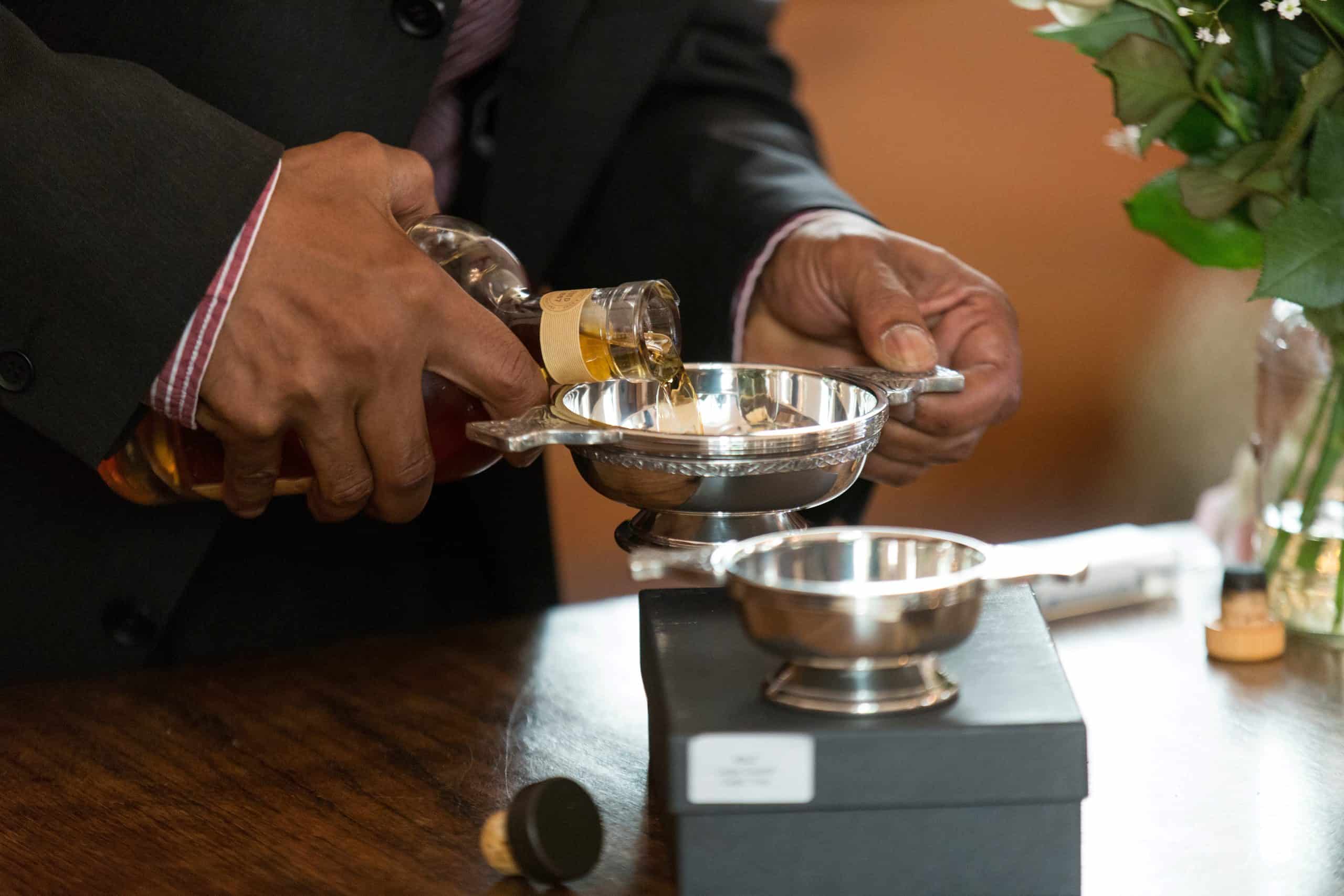
The quaich refers to a vessel with two handles used during the wedding feast. It is where the couple took their first Holy Communion and where they will drink their first toast, which is usually whiskey or brandy. The quaich used for weddings are made of pewter or silver with some wood.
Bagpipes in the Background
To welcome the guests as they arrive at the church, a piper plays bagpipes by the entrance. The piper also marks the end of the ceremony, playing as the newlyweds exit and walk to the bridal getaway car. In the reception, bagpipes are also played as the wedding cake is sliced.
Wedding Reception Dances
The second dance is the Lang Reel, in which all guests dance together at the harbor and make their way across their village. As guests reach their homes, they would leave the dance. This continues until only the newlyweds are dancing.
